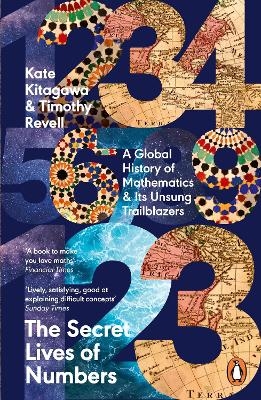
Treatise on Conic Sections
Edited in Modern Notation with Introductions, Including an Essay on the Earlier History of the Subject
Seiten
2013
Cambridge University Press (Verlag)
9781108062787 (ISBN)
Cambridge University Press (Verlag)
9781108062787 (ISBN)
Among his contemporaries in the third century BCE, Apollonius of Perga was dubbed 'the great geometer' for his treatise on conic sections. Civil servant and classical scholar Thomas Little Heath (1861–1940) published this English translation in 1896, with standardised notation and a thorough introduction to the subject.
Active in Alexandria in the third century BCE, Apollonius of Perga ranks as one of the greatest Greek geometers. Building on foundations laid by Euclid, he is famous for defining the parabola, hyperbola and ellipse in his major treatise on conic sections. The dense nature of its text, however, made it inaccessible to most readers. When it was originally published in 1896 by the civil servant and classical scholar Thomas Little Heath (1861–1940), the present work was the first English translation and, more importantly, the first serious effort to standardise the terminology and notation. Along with clear diagrams, Heath includes a thorough introduction to the work and the history of the subject. Seeing the treatise as more than an esoteric artefact, Heath presents it as a valuable tool for modern mathematicians. His works on Diophantos of Alexandria (1885) and Aristarchus of Samos (1913) are also reissued in this series.
Active in Alexandria in the third century BCE, Apollonius of Perga ranks as one of the greatest Greek geometers. Building on foundations laid by Euclid, he is famous for defining the parabola, hyperbola and ellipse in his major treatise on conic sections. The dense nature of its text, however, made it inaccessible to most readers. When it was originally published in 1896 by the civil servant and classical scholar Thomas Little Heath (1861–1940), the present work was the first English translation and, more importantly, the first serious effort to standardise the terminology and notation. Along with clear diagrams, Heath includes a thorough introduction to the work and the history of the subject. Seeing the treatise as more than an esoteric artefact, Heath presents it as a valuable tool for modern mathematicians. His works on Diophantos of Alexandria (1885) and Aristarchus of Samos (1913) are also reissued in this series.
Preface; List of principal authorities; Introduction: Part I. The Earlier History of Conic Sections among the Greeks; Part II. Introduction to The Conics of Apollonius; The Conics of Apollonius.
| Erscheint lt. Verlag | 21.11.2013 |
|---|---|
| Reihe/Serie | Cambridge Library Collection - Mathematics |
| Zusatzinfo | 1 Plates, black and white; 100 Line drawings, unspecified |
| Verlagsort | Cambridge |
| Sprache | englisch |
| Maße | 140 x 216 mm |
| Gewicht | 550 g |
| Themenwelt | Mathematik / Informatik ► Mathematik ► Geschichte der Mathematik |
| ISBN-13 | 9781108062787 / 9781108062787 |
| Zustand | Neuware |
| Informationen gemäß Produktsicherheitsverordnung (GPSR) | |
| Haben Sie eine Frage zum Produkt? |
Mehr entdecken
aus dem Bereich
aus dem Bereich
a global history of Mathematics & its Unsung Trailblazers
Buch | Softcover (2024)
Penguin Books Ltd (Verlag)
CHF 22,65
How We Navigate the World Through Numbers
Buch | Softcover (2025)
Picador (Verlag)
CHF 22,65


